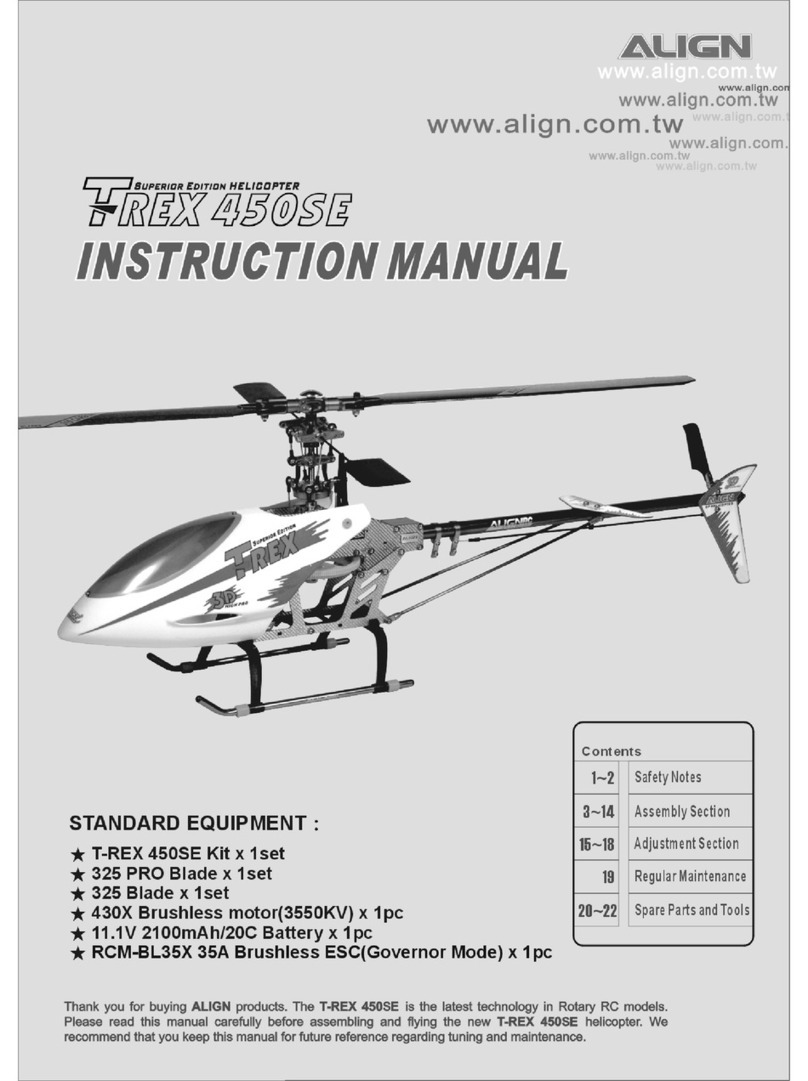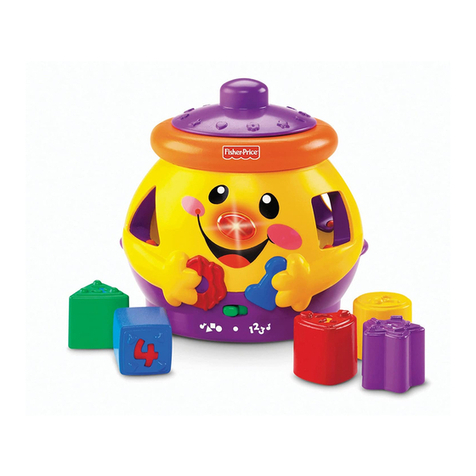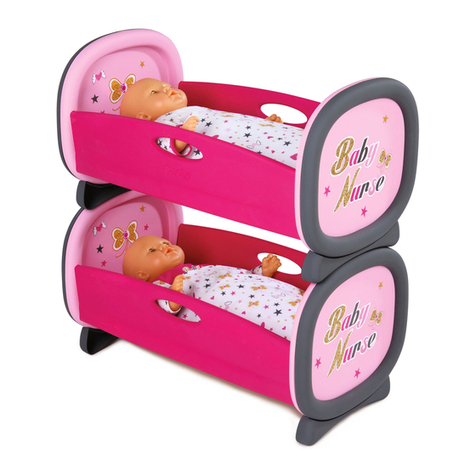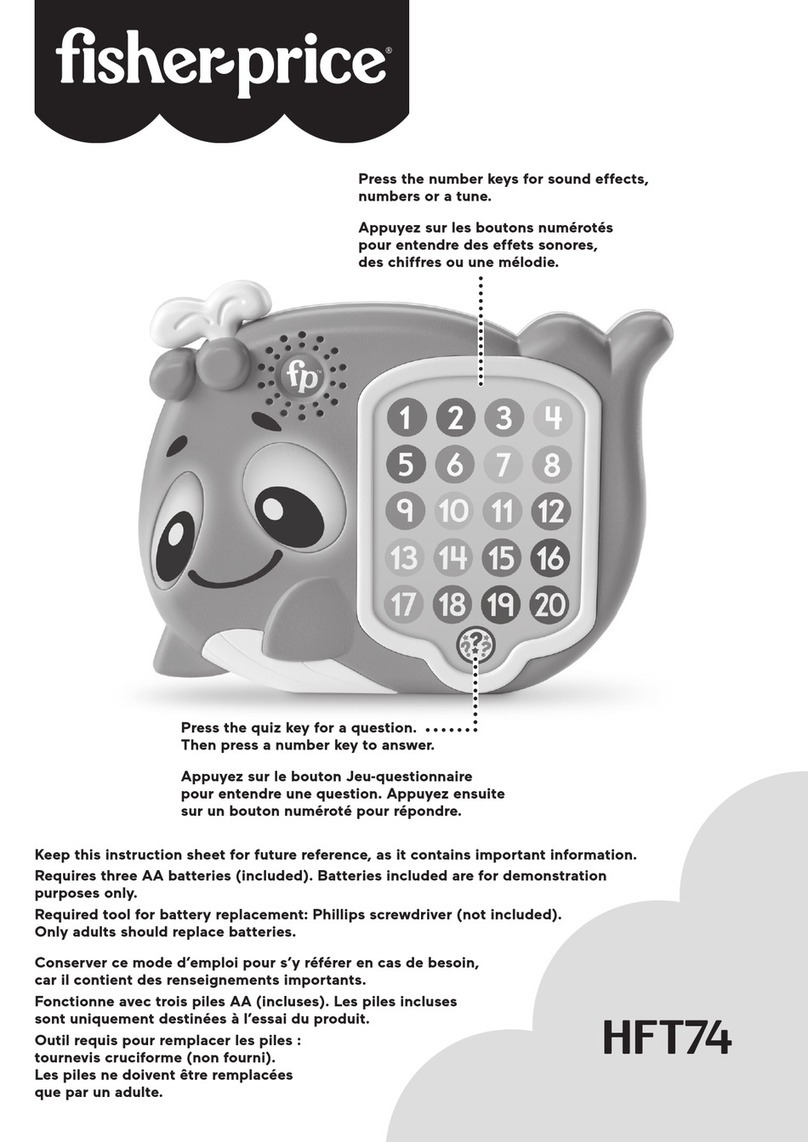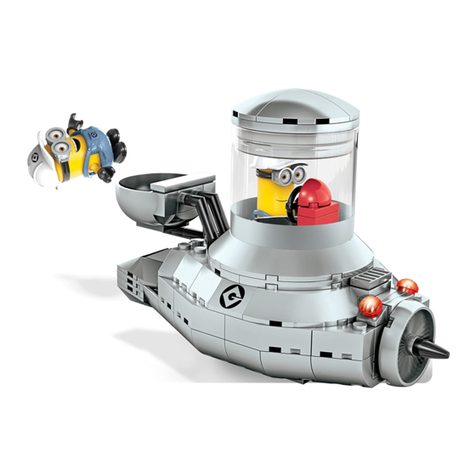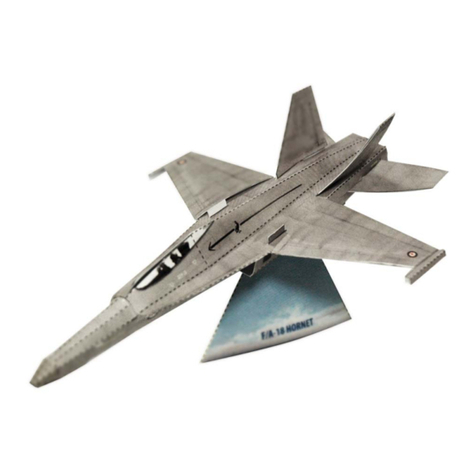EB Excalibur Light Dragon User manual

Light Dragon
Remote Control Helicopter
User Guide
#XC9852 © 2012 EB Excalibur, Inc.
SAVE THESE INSTRUCTIONS.
READ COMPLETE INSTRUCTIONS BEFORE USE.

2
HELICOPTER LAYOUT
CONTROLLER LAYOUT
Switch
Charging Socket
Stabilizer
Connecting Shaft
Landing Skid
Main Rotor Blade
Bottom of Helicopter
Battery
Compartment
Battery
Compartment Cover
Screw
Band
Selector
Throttle
Stick
Charging
Indicator
Switch
Cover
and
Charging
Wire
Trim
Control
Knob
Direction
Joystick
Power Indicator

3
Congratulations on your new EXRC purchase! EXRC pilots experience superior
ight and excellence in the look and feel of our products while
commanding the skies. Now that you are an honorary EXRC pilot, we recommend
ight. Inside
ight tips, safety precautions, and care instructions to
ight missions. No need
to make sure your seats and tray tables are in the upright and locked position, no
nal
. Just follow the instructions, and enjoy your EXRC
helicopter to the fullest while commanding the skies.
BATTERY INSTALLATION & CHARGING
Installing Batteries in the Remote Controller
1. Using a Phillips-head screwdriver, remove the screw from the battery
compartment cover.
2. Insert 6 AA batteries, making sure to follow the battery polarity
(+ and -) drawing on product.
3. Replace the battery compartment cover and secure with the screw.
Charging the Helicopter
1. Make sure the controller is turned ON.
the front center of the
controller, and take out the charging wire.
3. Make sure the helicopter power is OFF.
Insert the charging plug into the
charging outlet on the helicopter.
4. The top LED light will blink when the
helicopter is charging, The bottom LED
light will turn green while charging and turn
when fully charged. Remove the plug
from the helicopter.
Requires approximately
15 minutes charge for
ight.
DO NOT OVERCHARGE
Switch
Bottom of Helicopter

TRIMMING HELICOPTER/DIRECTION CONTROL
Virtually no trimming is required for the Light Dragon. If the helicopter rotates
ight, use the rudder trim Knob on the top right side to adjust.
1. When the helicopter is spinning counterclockwise, turn the Rudder Trim
Knob clockwise to adjust.
2. When the helicopter is spinning clockwise, turn the Rudder Trim Knob
counterclockwise to adjust.
nger while control
forward/backward movement and turning with your thumb.
FLYING YOUR HELICOPTER
y Light Dragon features a sleek translucent body style with LED
lights that changes the chopper’s colors, making it ideal for night missions.
Getting Started
1. Select the frequency band on the controller.
2. Move the chopper’s switch to the ON position (bottom).
The helicopter will light up, indicating it is on.
3. Carefully hold the chopper in one hand, be sure the
blades are clear, press the throttle (left joy stick) from the
position all the way forward and back to“set” the band. The red light will
stop blinking. The chopper will automatically sync.
4. Place the chopper on the ground with the tail pointed toward you and the
nose facing away from you.
5. Make sure your surroundings are clear of obstacles before operating.
4
Switch
Bottom of Helicopter

5
Hover Up and Down
ying
steadily, you can slowly press
the throttle stick up to make
y higher, or
release the stick to make the
y lower. For
ying, only make
small movements. Adjust
trim to avoid spins.
Turning Clockwise and
Counterclockwise
Keep the helicopter at a steady height. Push the rudder stick on the right side
to the left to turn the helicopter counterclockwise. Push the rudder stick right
to turn the helicopter clockwise. Adjust trim to avoid spins.
Interference
Some radio frequencies or other R/C units nearby can cause interference and
poor performance. Try to move away from the source of the interference.
FLIGHT CONDITIONS
ight location:
• Indoor environment with little air conditions. Heavy air-conditioning can be
ight. It is also highly recommended to turn
all electric fans, air conditioning units, or reading lamps that could impair
ying.
ight be at least 10 ft. x 15 ft. x 10 ft.
CONTROL TIPS
•It is best to start with both joysticks onthe remote control in the middle position.
Do not immediately push into extreme positions. Instead start by gently
easing the joystick into the position of which direction you would like to go.
•EXRC recommends for initial piloting of the helicopter, focus on learning to
ight, we recommend you
work at learning to keep the helicopter at a constant 3-foot altitude before
attempting to learn directional control of the helicopter. After the pilot has
mastered the throttle joystick, then start learning to turn with the direction
joystick.
Hover Up
and Down
Turning
Clockwise and
Counterclock-
wise
Contant
Forward
Movement

6
SAFETY TIPS
•Read through the entire instruction manual, before attempting
to pilot your helicopter.
•This product is intended for indoor use, and works best indoors. We do
not recommend using the product outdoors.
y your helicopter in a cluttered space. This helicopter
was intended for obstacle free wide area spaces.
•Make sure all people and animals are 3-5 feet from the helicopter before
ying it.
y/land/or
crash anywhere on or near any other people or animals.
•The rotating parts on the helicopter could lead to injury. Never put any
body part including the hands and face, close to the rotating parts. Only
operate this product standing, as it allows for quick movement away from
the helicopter if necessary.
•Never operate the helicopter using parts that are altered in shape or
damaged in any form.
TROUBLESHOOTING
Problem Cause Correction
Helicopter is
not responding
to remote
Incorrect channel
selection on the
remote
Gently press forward on the left joy-
stick and switch between the three
channels until the helicopter takes
ight. This is the correct channel.
Loss of Control Interference of
another remote
controlled device
Interference by
other conditions
such as lighting
Avoid all other remote controlled
devices running on the same
channel.
Change environment to better
suited conditions.
Helicopter
Spinning out of
control
Incorrect trim
adjustment
Adjust the trim as shown above
nd the proper adjustment.

7
TROUBLESHOOTING (continued)
CARE & HANDLING
• Do not submerge in water or other liquids.
• Do not disassemble the product for any reason.
• Do not expose to extreme temperatures.
• Do not drop, throw, smash or otherwise cause physical shock.
• Clean using only a slightly damp cloth.
• Do not use cleaners with chemical agents.
• Do not short-circuit the battery terminals.
CAUTION – Battery Safety Information
• Non-rechargeable batteries are not to be recharged
• The pre-installed battery is non-replaceable
• Rechargeable batteries should only be recharged under adult supervision
• Do not mix alkaline, standard (carbon-zinc), or rechargeable
(nickel-cadmium) batteries
• Exhausted batteries are to be removed
• Do not mix old and new batteries
re; batteries may explode or leak
• If this product will not be used for an extended period, remove the
batteries from the product
• The supply terminals are not to be short-circuited
• Batteries are to be inserted with correct polarity
• Clean the battery contacts and also those of the product prior to
battery installation
• As always, dispose of batteries in an eco-friendly manner
Set the ON/OFF Switch to the ON
position.
Recharge the helicopter battery.
If this does not work, replace
the batteries in the remote and
fresh batteries.
Problem Cause Correction
Helicopter suddenly
stops and drops
ight or seems
to have weak
performance
Weak battery
power
Recharge the helicopter battery.
If this does not work, replace
the batteries in the remote and
fresh batteries.
Propellers are not
moving
Helicopter is
Weak battery
power

FCC Part 15 Compliance
The device complies with Part 15 of the FCC Rules. Operation is subject to the following two
conditions: (1) this device may not cause harmful interference, and (2) this device must accept
any interference received, including interference that may cause undesired operation. Changes
cations not expressly approved by the party responsible for compliance could void the
user’s authority to operate the product.
Note: This equipment has been tested and found to comply with the limits for a Class B digital
device, pursuant to Part 15 of the FCC Rules. These limits are designed to provide reasonable
protection against harmful interference in a residential installation. This equipment generates,
uses and can radiate radio frequency energy and, if not installed and used in accordance with
the instructions, may cause harmful interference to radio communications. However, there is no
guarantee that interference will not occur in a particular installation. If this equipment does cause
harmful interference to radio or television reception, which can be determined by turning the
and on, the user is encouraged to try to correct the interference by one or more of
the following measures:
•Reorient or relocate the receiving antenna.
•Increase the separation between the transmitting equipment and receiver.
erent from that to which the receiver
is connected.
•Consult the dealer or an experienced radio technician for help.
EB Excalibur, Inc., Miami, Florida
www.EBExcalibur.com
service@EBExcalibur.com
© 2012 EB Excalibur, Inc.
Distributed in the United Kingdom by: EB Brands UK, Worcester WR4 9FA
er slightly from photograph.
XC9852IS01EXC
WARNING
CHOKING HAZARD - Small Parts.
Not for children under 3 years.
Table of contents
Other EB Excalibur Toy manuals

EB Excalibur
EB Excalibur US5918 User manual

EB Excalibur
EB Excalibur War Bird User manual
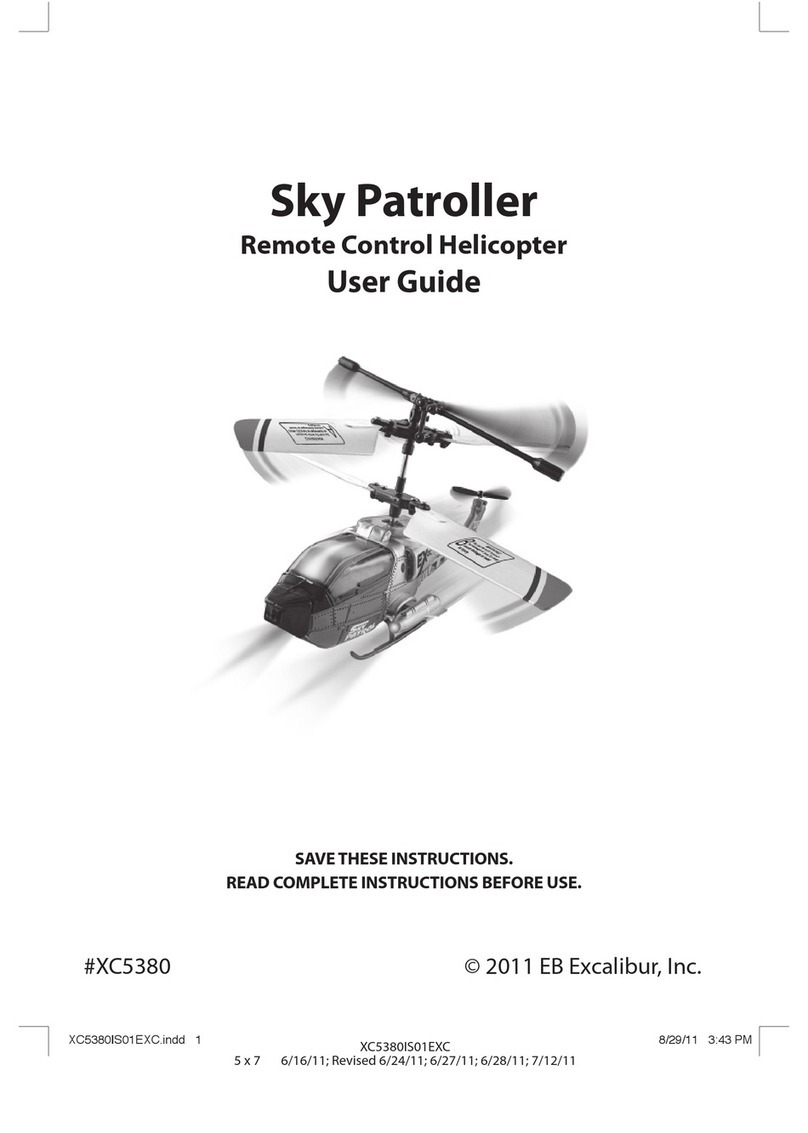
EB Excalibur
EB Excalibur Sky Patroller User manual
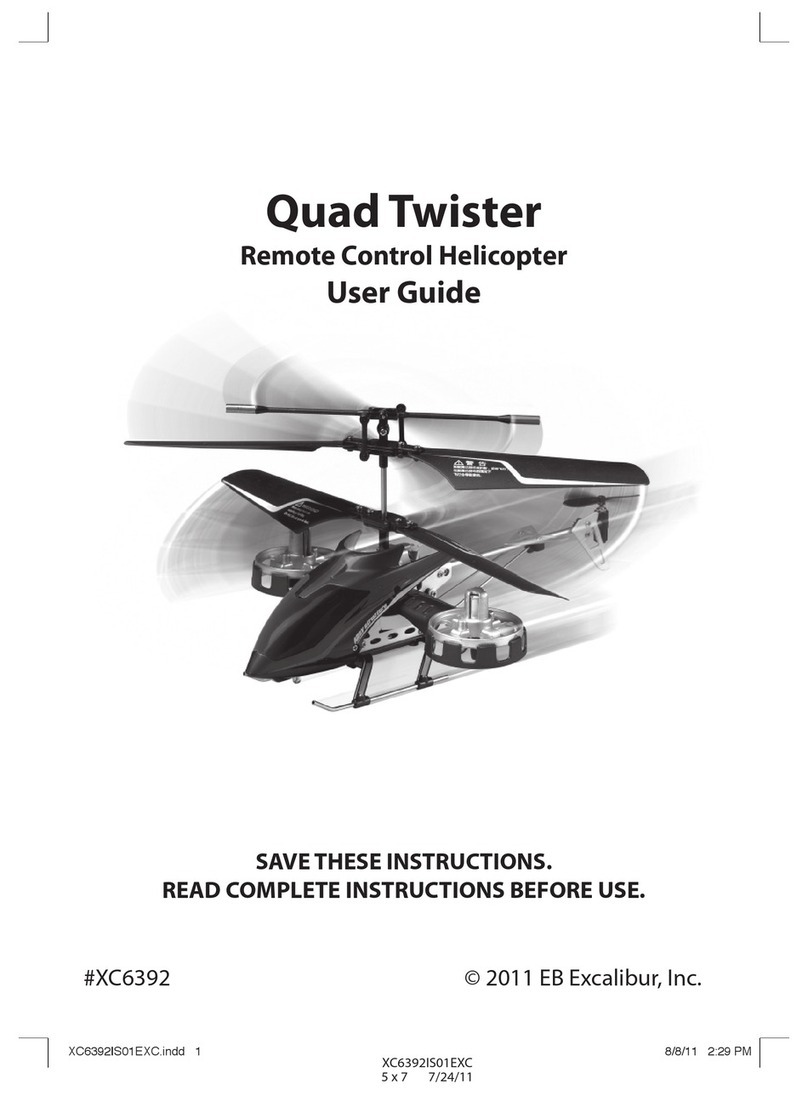
EB Excalibur
EB Excalibur Quad Twister User manual
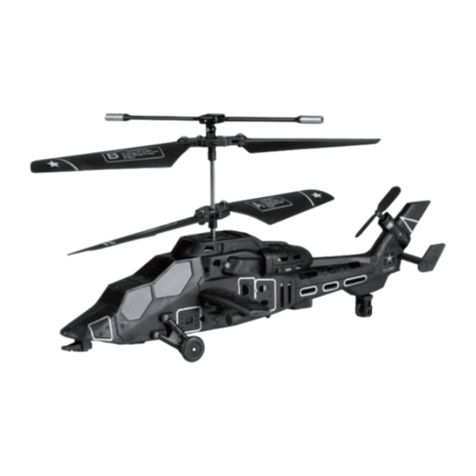
EB Excalibur
EB Excalibur Sky Runner User manual
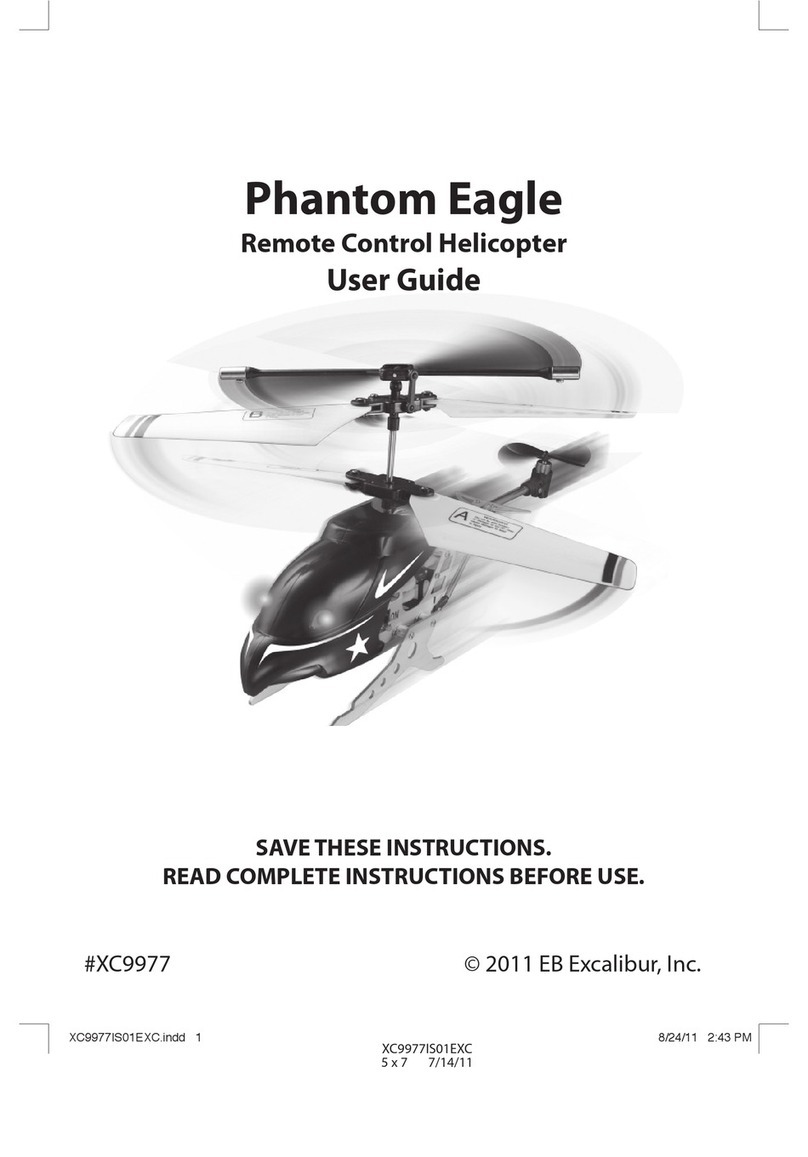
EB Excalibur
EB Excalibur Phantom Eagle XC9977 User manual

EB Excalibur
EB Excalibur Night Raider XC9893 User manual
Popular Toy manuals by other brands

Oxford Rail
Oxford Rail OR76AR Adams 415 operation & maintenance
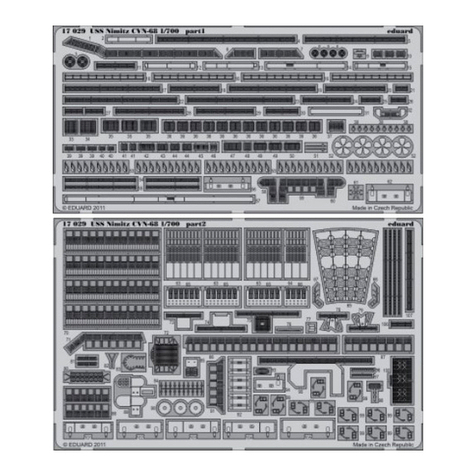
Eduard
Eduard USS Nimitz CVN-68 1/700 quick start guide
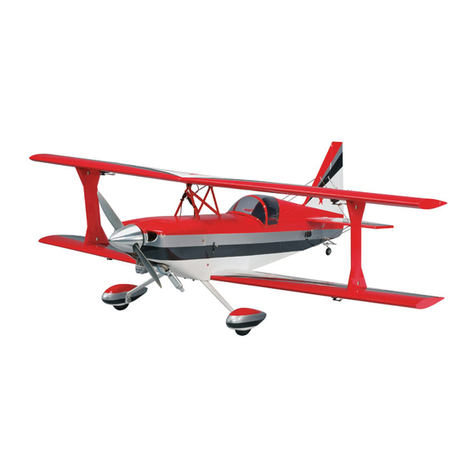
Carl Goldberg Products
Carl Goldberg Products ULTIMATE instruction manual

Smoby
Smoby Space Center manual

Hasbro
Hasbro E3996 manual
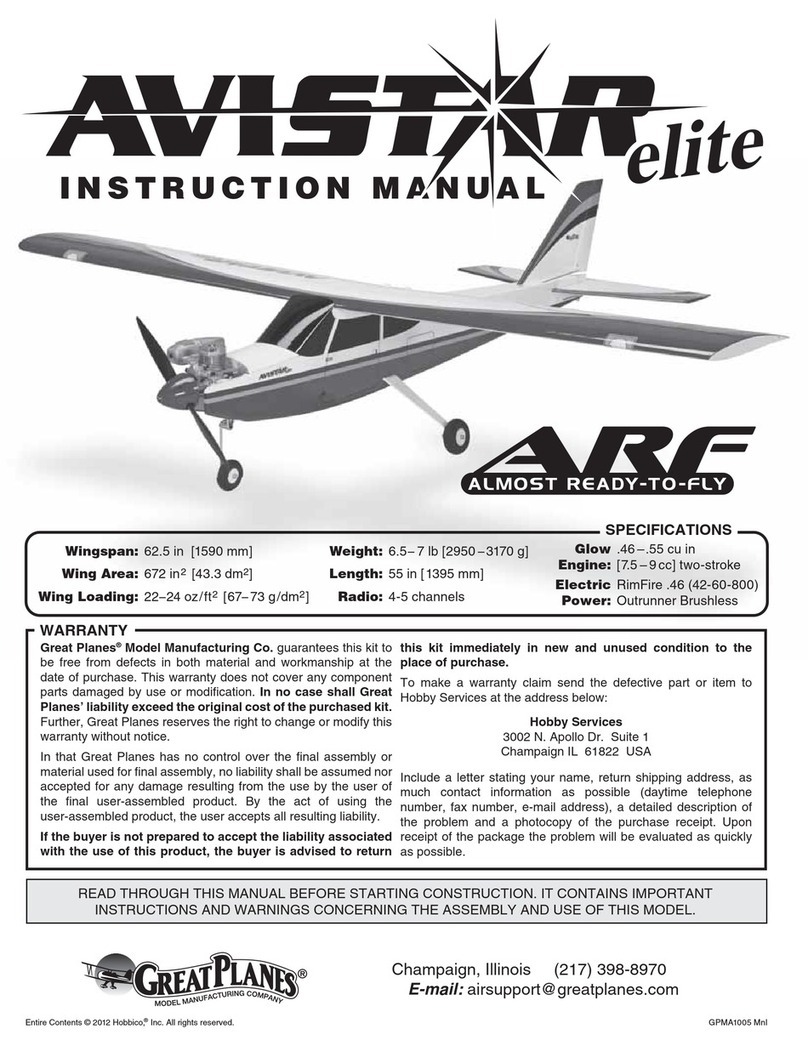
GREAT PLANES
GREAT PLANES Aviastar elite instruction manual

